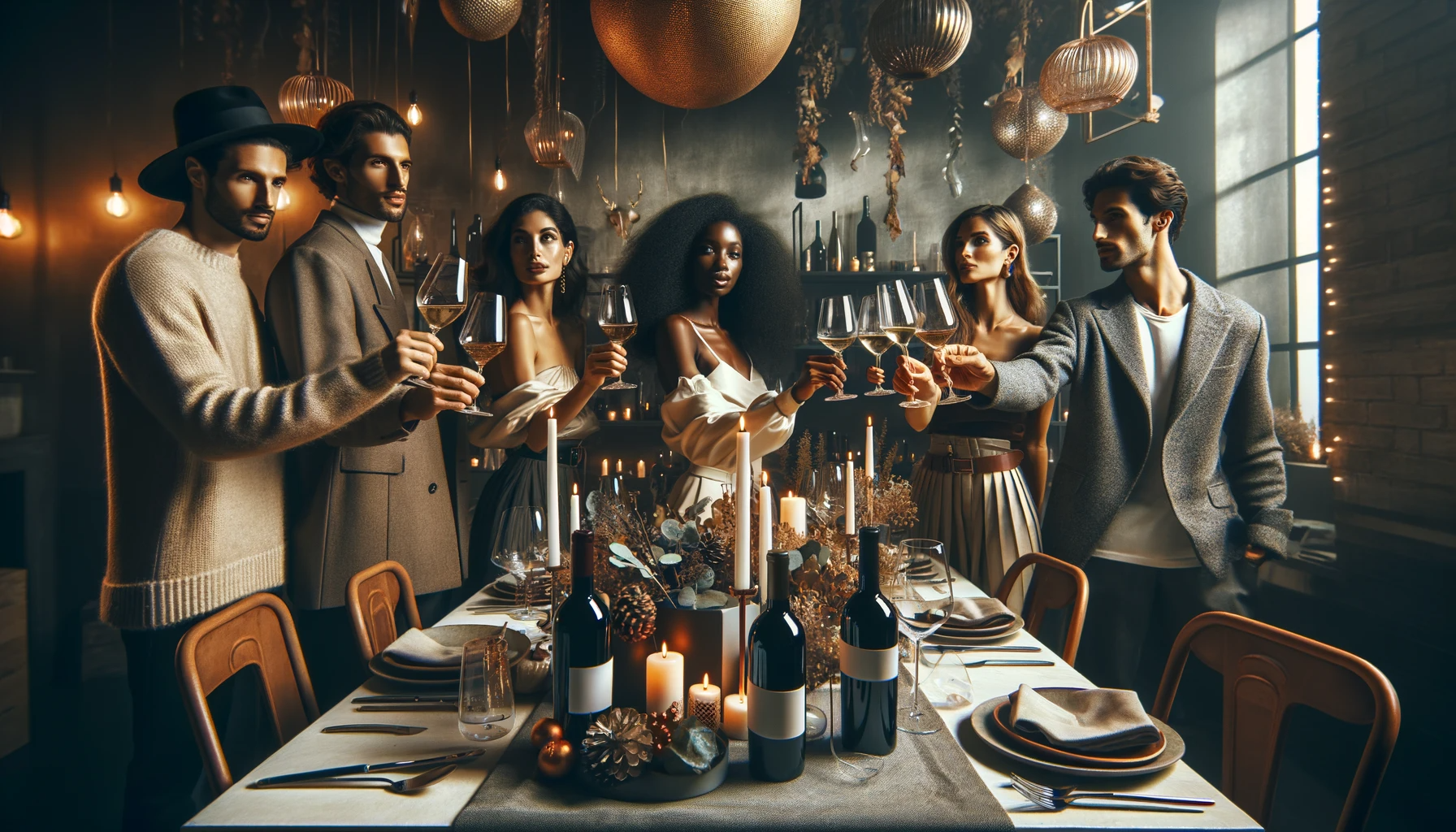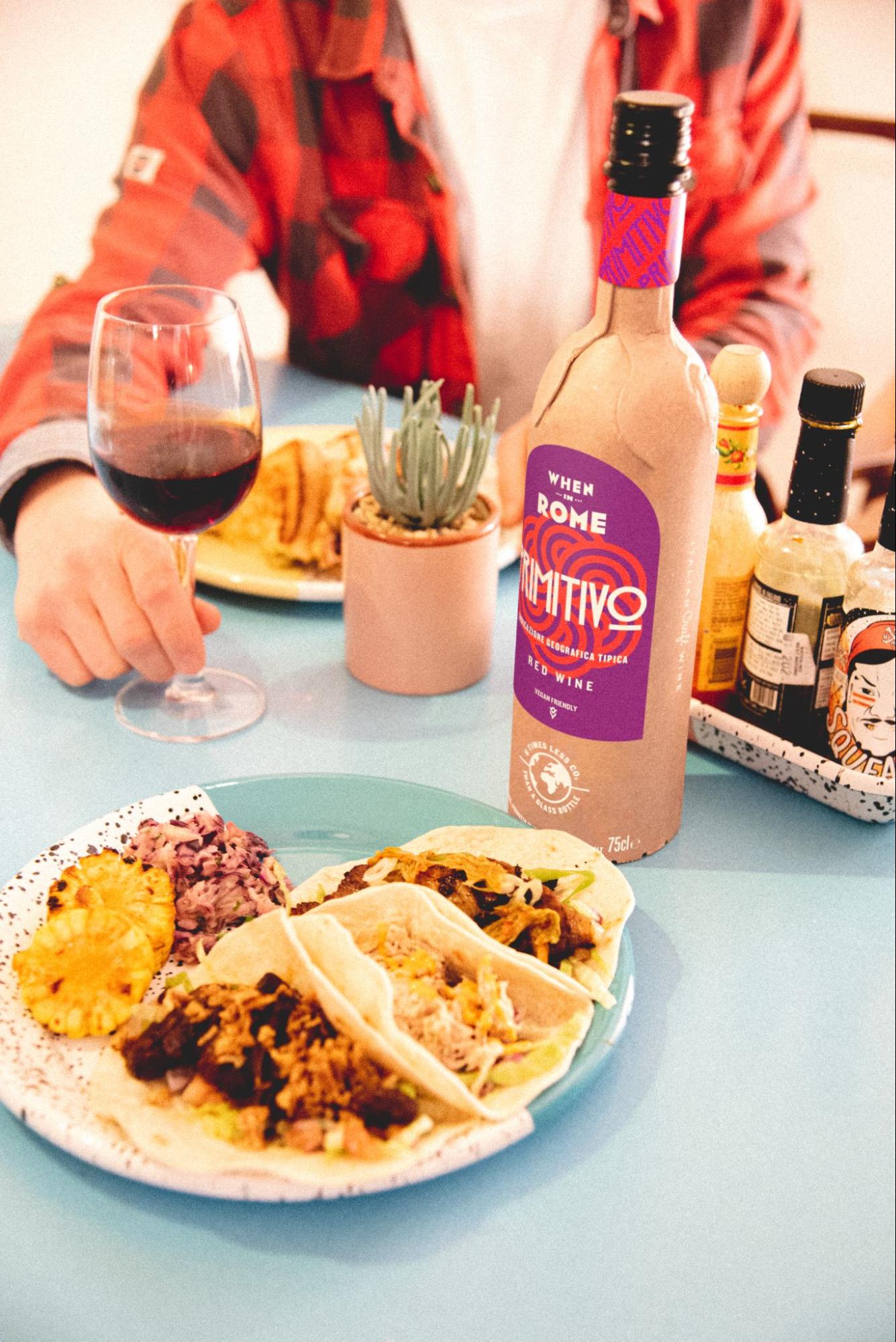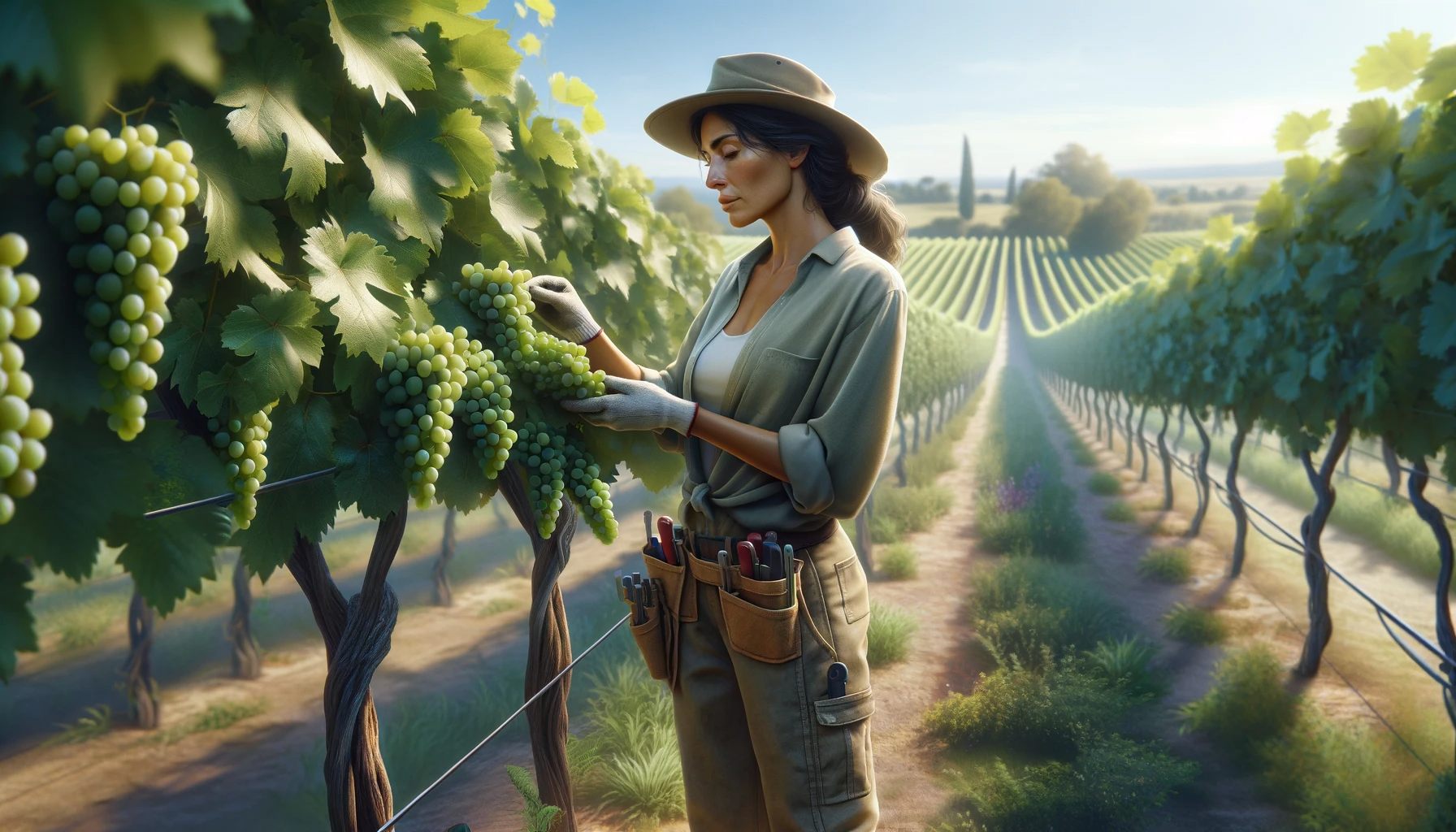- Wine Color/Type
- Top Occasions
- Unique Wines
- Surprise Me!
6 Wine Trends to Watch in 2024
As time passes, our drinking habits evolve. The wines we enjoyed five years ago have given way to new styles that capture our palates today. It's natural for our tastes to change, particularly with beverages that are often an acquired taste. At VinoVoss, we constantly explore emerging trends in the wine world. Here are our predictions for the wine styles that will be trending in 2024.
Celebrating New Year with New Wine Trends. (Photo: DallE)
Low and No Alcohol Wines
The low and no-alcohol (NoLo) wine category is currently experiencing the most significant growth within the wine industry. These are wines deliberately crafted to deliver the full flavor experience while reducing alcohol and calorie content. The alcohol free and health-conscious aspect is increasingly important to consumers. According to the International Wine and Spirits Competition (IWSC), the non-alcoholic wine and spirits category is expected to comprise 4% of the total market by 2027.
These non-alcoholic drinks don't have the same complex taste as aged Burgundy or expensive wines. However, they offer everyday enjoyment and serve as an excellent alternative for those looking to reduce their wine consumption. A key benefit is that the positive effects of red wine, particularly the antioxidants like riboflavin, are also present in non-alcoholic wines.
The Rise of Natural and Vegan Wine
Wine producers frequently produce natural wines, often referred to as low-intervention wines, in a vegan style. The term 'natural wine' implies minimal processing and absence of additives.
Commonly, these wines are made without using animal-based fining agents like gelatin or fish bladder, which, despite being filtered out later, raise concerns for some consumers. Recent EU labeling regulations may further influence this trend, as winemakers grapple with whether these processing aids should be listed on labels. Would you, for instance, be comfortable drinking knowing a wine that had been in contact with fresh egg whites?
The production of these wines, coupled with transparent communication, supports the natural wine movement. Typically, natural wines are crafted by small, artisanal, family-owned wineries in limited quantities. Most of these wineries lack the infrastructure to produce a wide array of wine styles, focusing instead on their unique natural offerings.
On a side note, natural wines often include skin contact wines, or so called-orange wines. These traditional white wines require some expirience and to enjoy and can be challenging.
Natural wine has cultivated a dedicated following. In cosmopolitan cities like New York, Singapore, Barcelona, and Berlin, there exists a distinct natural wine audience. Once predominantly a choice of hipsters, natural wines have now gained mainstream popularity. You can find specialized wine bars, shops, and e-commerce platforms that spotlight these producers, showcasing their wines to an engaged international audience.
At VinoVoss, we've embraced this trend. Simply use the “Natural Wine” filter on our website to discover your next favorite winery.
Toggle the Natural Wine button to apply this unique filter. (Photo: VinoVoss)
Alternative Packaging
The common belief that ’wine always comes in a glass bottle’ is shifting. Although historically accurate, glass bottles have a significant carbon footprint. Today's environmentally conscious wine drinkers are increasingly turning to alternative packaging options to reduce this impact.
One popular alternative is the bag-in-box wine. These 3 or 5 liter packages can keep wine fresh for weeks, allowing you to enjoy wine by the glass without committing to an entire bottle.
Canned wines, successfully introduced by major producers like Barefoot, are another growing trend. Cans are convenient for on-the-go consumption, requiring no glassware. They also have the lowest CO2 footprint among wine packaging options and are recyclable within designated systems.
Further innovation has led to the creation of the paper bottle, known as the FrugalPac. Comprising 94% recyclable paper, these bottles are five times lighter than traditional glass bottles and use 77% less plastic. Their carbon footprint is remarkably six times lower than that of glass bottles. Wines packaged in these bottles are typically of good quality and meant for immediate consumption.
Beyond their environmental benefits, these bottles offer a new canvas for design, available in a variety of unique formats. Some forward-thinking spirits producers have also begun using paper bottles. While currently rare in the U.S., their availability is expected to increase significantly in the near future. We reccommend to keep the eyes peeled, as wine Brands like to communicate their market entry through social media.
The ‘When in Rome’ brand has gained popularity in the UK. (Photo: When in Rome)
Seeking Affordable Sparkling Wines
As Champagne prices soar, many wine enthusiasts are looking for more affordable options without compromising on quality. The global wine scene is adaptable and diverse, leading to several regions rising in popularity as alternatives to Champagne.
Franciacorta: Italy's Sparkling Powerhouse
In Franciacorta, fine sparkling wines, which had a rich history but were forgotten over time, saw a revival in 1961. This resurgence was led by pioneering winemakers Guido Berlucchi and Franco Ziliani, who produced the first Metodo Classico. Like Champagne, Franciacorta wines are primarily made from Chardonnay and Pinot Noir. The introduction of the Erbamat grape variety helps maintain fresh acidity in times of climate change and can be blended to a certain extent.
These wines undergo a similar production process to Champagne, benefiting from extended secondary fermentation in the bottle. Stylistically, Franciacorta wines resemble Champagne, offering varieties like Satén (blanc de blancs), Rosé, as well as traditional Riserva and Millesimato (vintage expressions).
In terms of maturation, standard Franciacorta requires 18 months on the lees, while vintage versions need 30 months and riserva at least 60 months. In comparison, Champagne mandates a minimum of 12 months on the lees and 3 months post-disgorgement for non-vintage, and 36 months for vintage Champagnes. Both regions often exceed these minimum aging periods to enhance quality.
Guido Berlucchi Cuvée Imperiale Brut
[insert:wine:guido-berlucchi-cuvee-imperiale-brut-0]
Crémant de Loire: A Local Alternative
Sometimes the best solution is closer to home, as with Crémant de Loire. Predominantly based on Chenin Blanc, these wines are required to mature for at least 12 months in the bottle, acquiring high-quality bubbles through extended bottle maturation.
Crémant de Loire shares the piercing acidity of Champagne but tends to be more fruit-driven with a lighter body. Its distinct profile, characterized by less autolytic influence and shorter lees aging, positions these wines at a premium level without the hefty price tag of Champagne.
Bouvet-Ladubay Excellence Brut Crémant de Loire
[insert:wine:bouvet-ladubay-excellence-brut-cremant-de-loire-0]
Organic Wines Lose Importance
In an era of escalating prices, inflation, and rising wine production costs, the popularity of organic wines has decreased. Despite efforts to preserve nature through initiatives like Lodi Rules or Napa Green, the critical factor remains the price point.
Organic wine grapes production incurs a cost increase of approximately 15-20%, varying by region. Sometimes, grape losses can exceed 60% due to fungal issues that could be mitigated with chemical treatments.
Interestingly, in Germany, the largest growth in organic products was seen in oat milk. This surge could be attributed to a shift towards healthier lifestyles, as oat milk is priced similarly to conventional milk. Its organic nature and environmental benefits are added perks, contributing to a greener planet. Maybe the wine industry can adapt.
Organic is still an important category in wine. (Photo: DallE)
The Shift from Varietal to Region
Consumers now care more about where the wine comes from than the type of grape used. Wines from renowned regions like Burgundy, Bordeaux, or Rioja are often more sought after than varietal wines like a Tempranillo from Spain. Varieties like Sauvignon Blanc, Cabernet Sauvignon or Rktsatelli might be hard to pronounce. Oak-aged dessert wines are usually sold under their respective appellations, but they are unlikely to gain much traction due to their sweetness.
This trend is reflected in the export figures from the Federation of French Wine and Spirits Exporters (FEVS), which show a bleak outlook for varietal IGP and VDF wines.
However, classic wine regions such as Napa Valley, Sonoma County, and Barossa Valley continue to maintain a positive reputation. This indicates that the origin may be more influential than the grape variety used, opening opportunities for winemakers to experiment with new blends and styles.
As 2024 unfolds, consumers will be shaped by these trends and producers will adjust their strategies accordingly. In this year, wine lovers can explore new flavors, learn about sustainable practices, and understand more about the diverse world of wine.
Stay tuned in our VinoVoss blog to discover the newest trends and wines.
Peter Douglas
Latest articles




